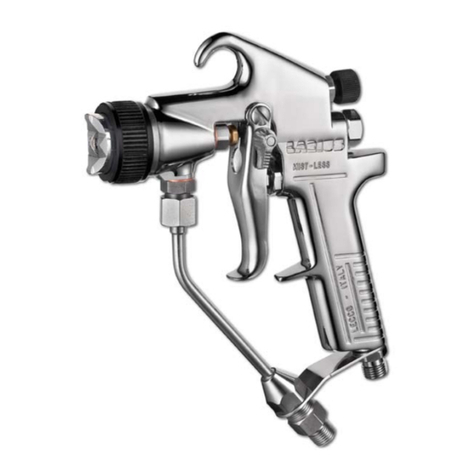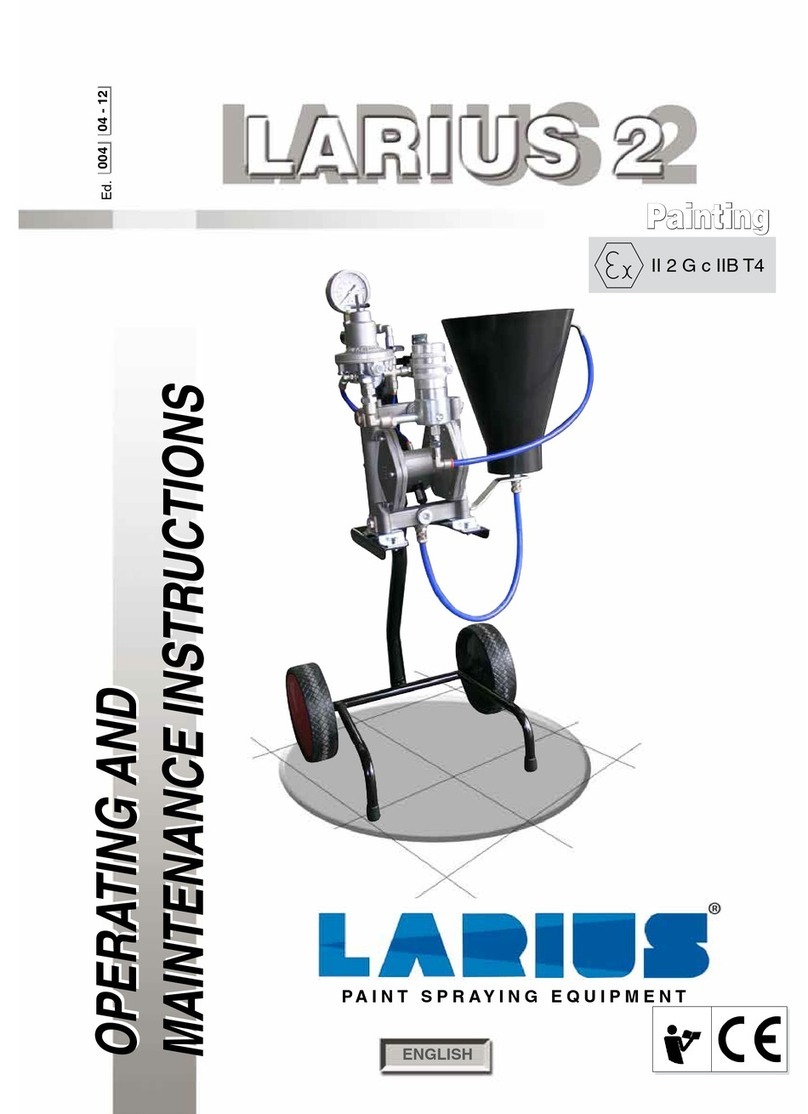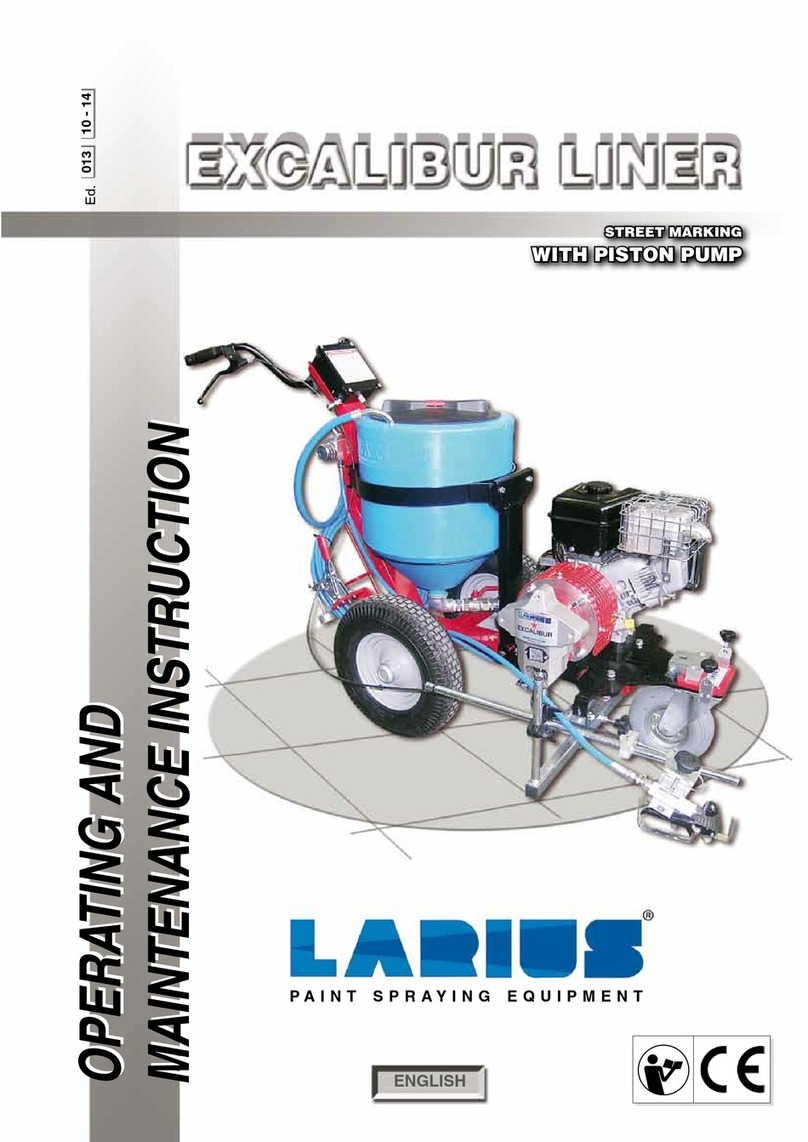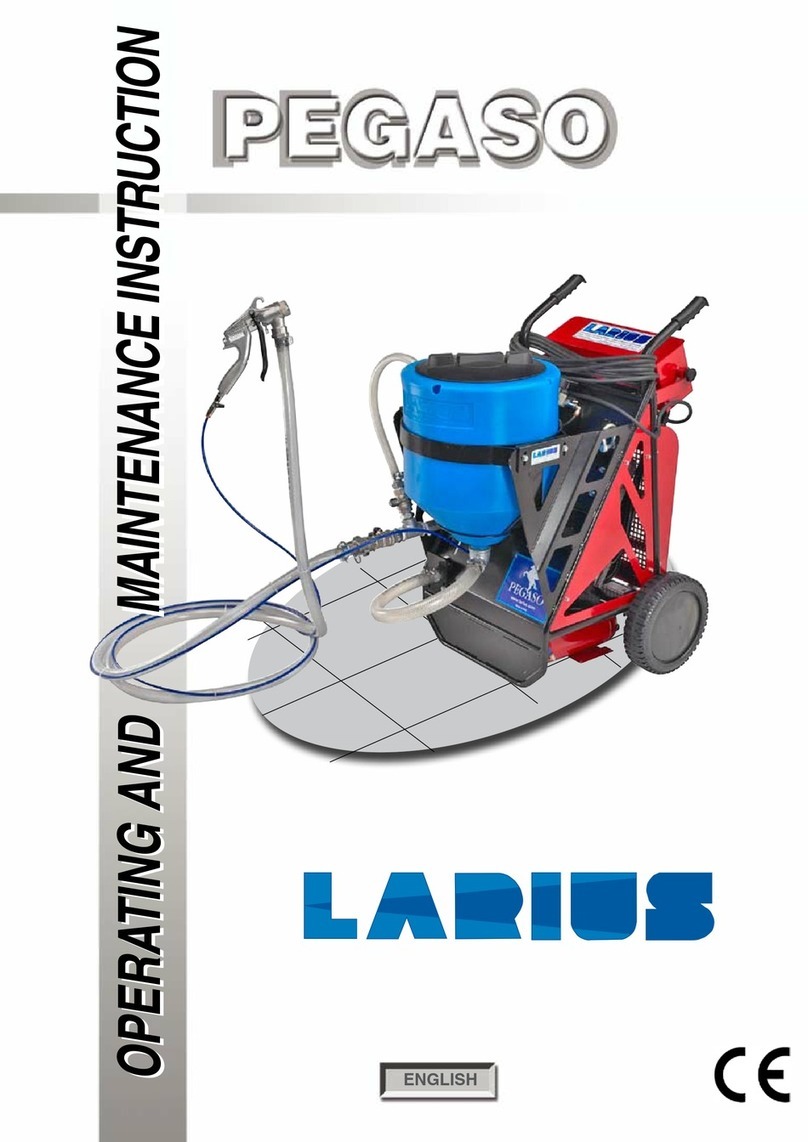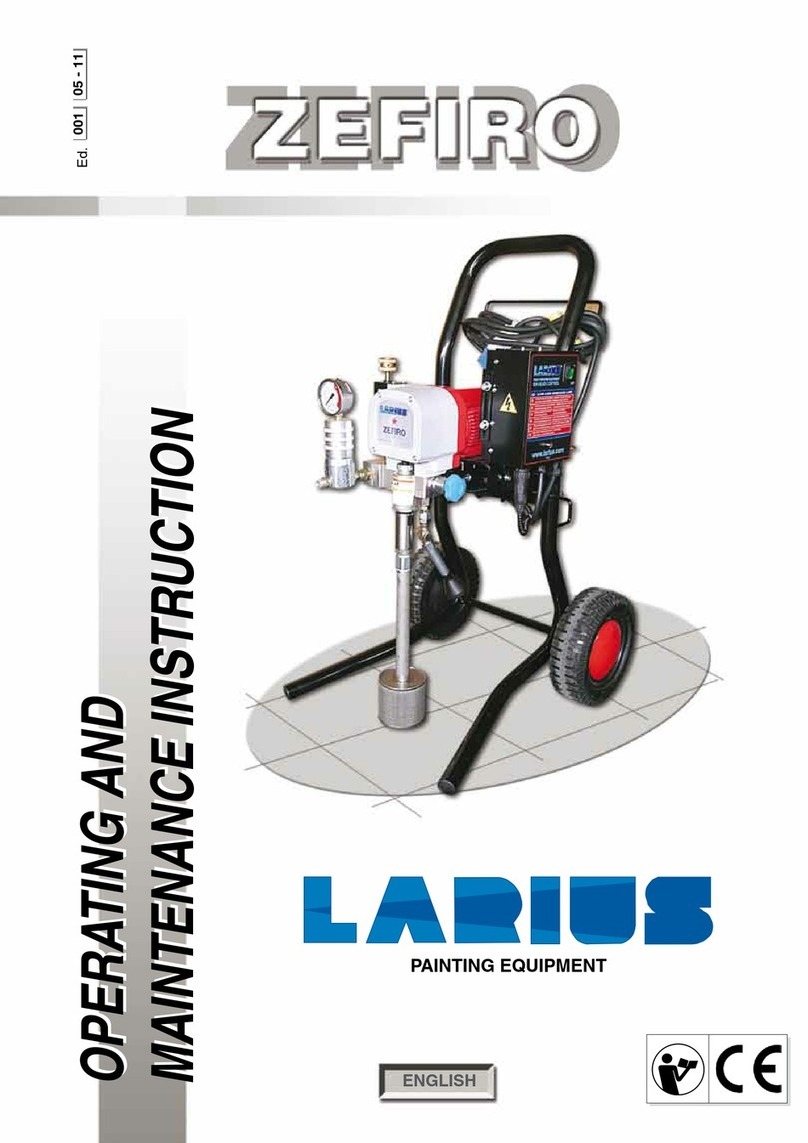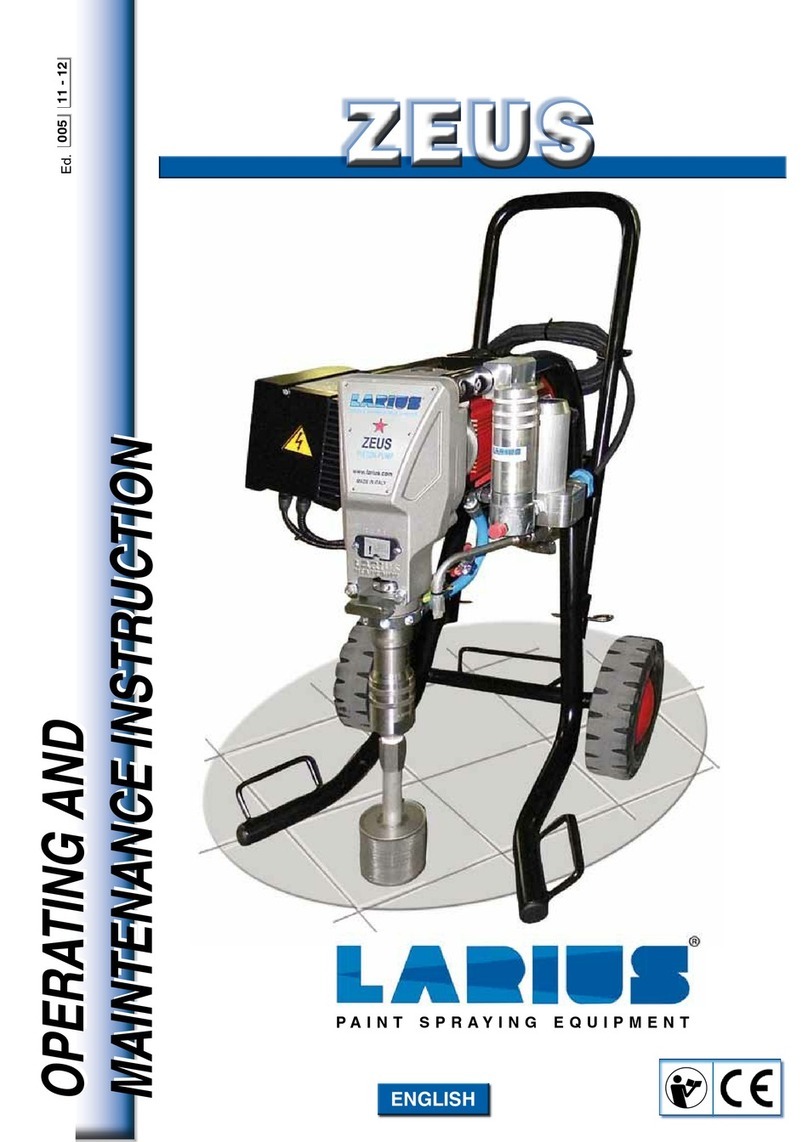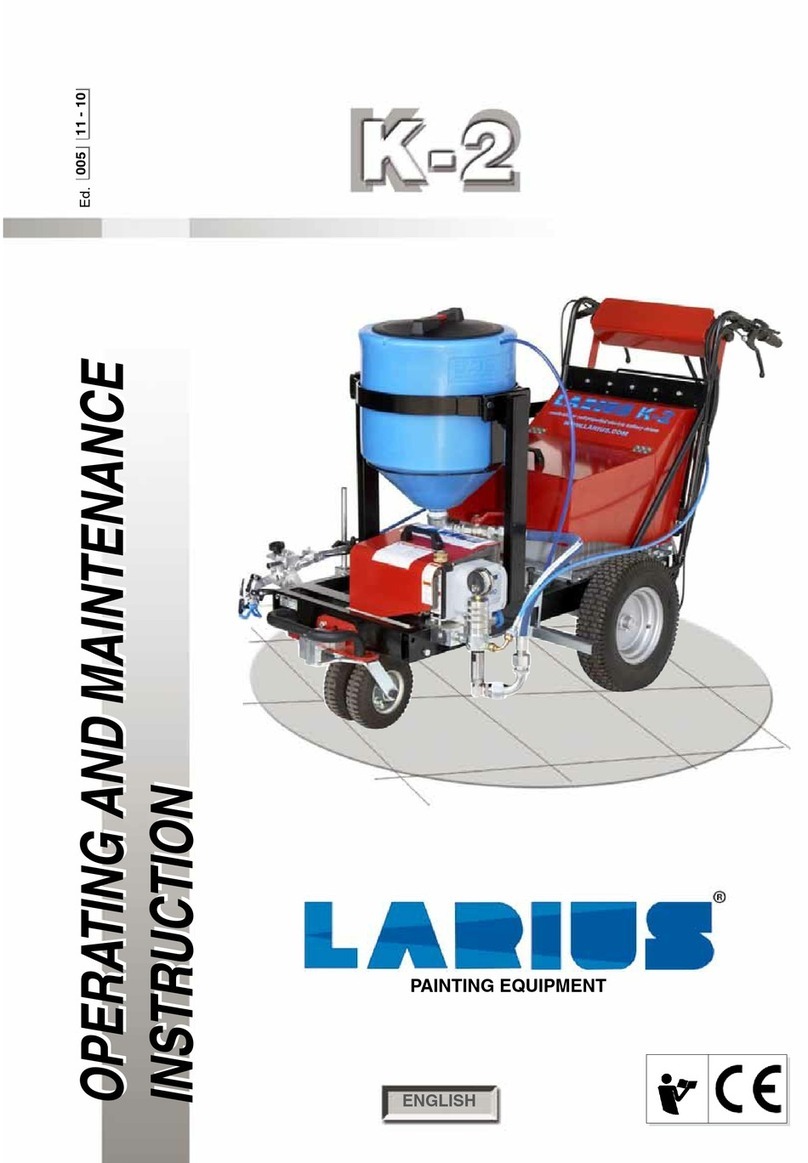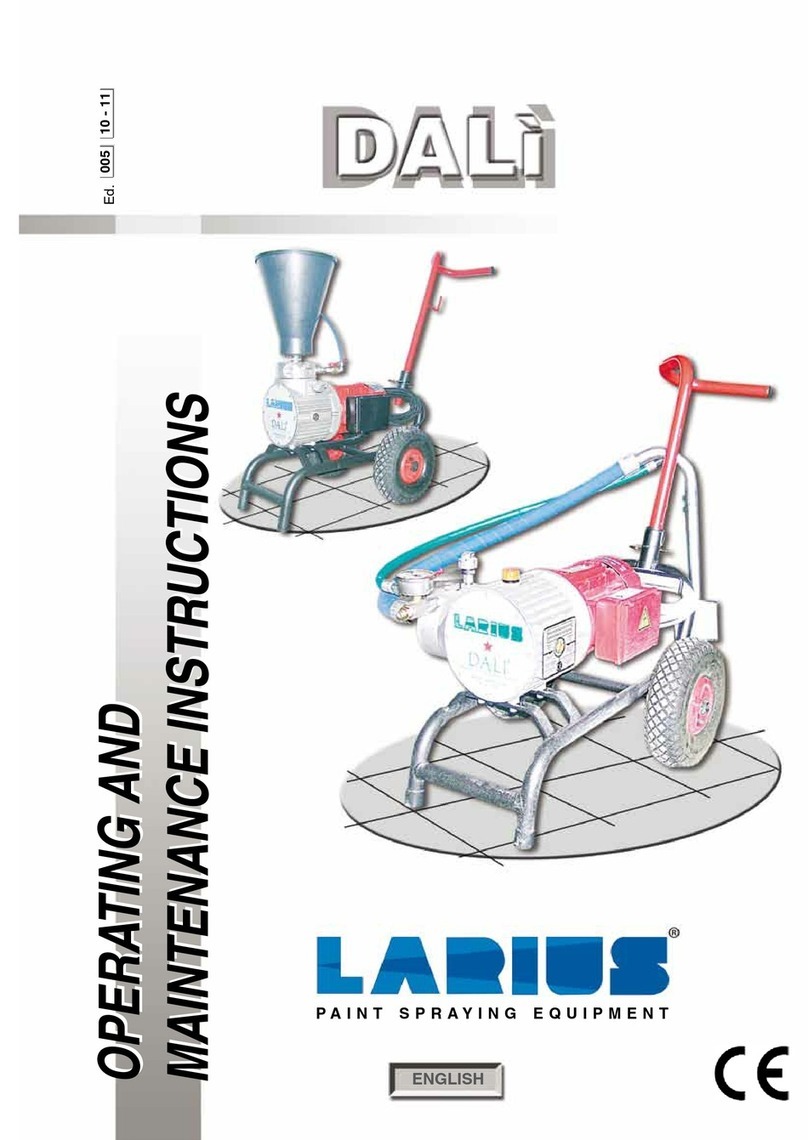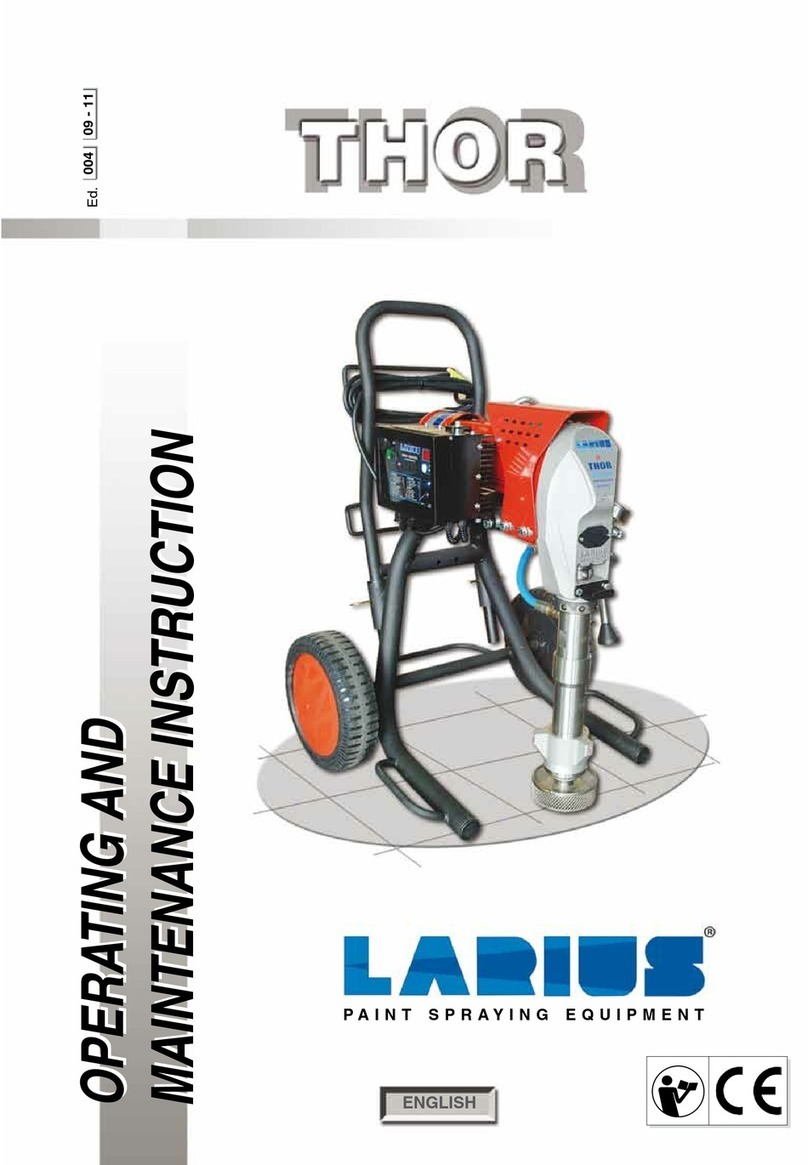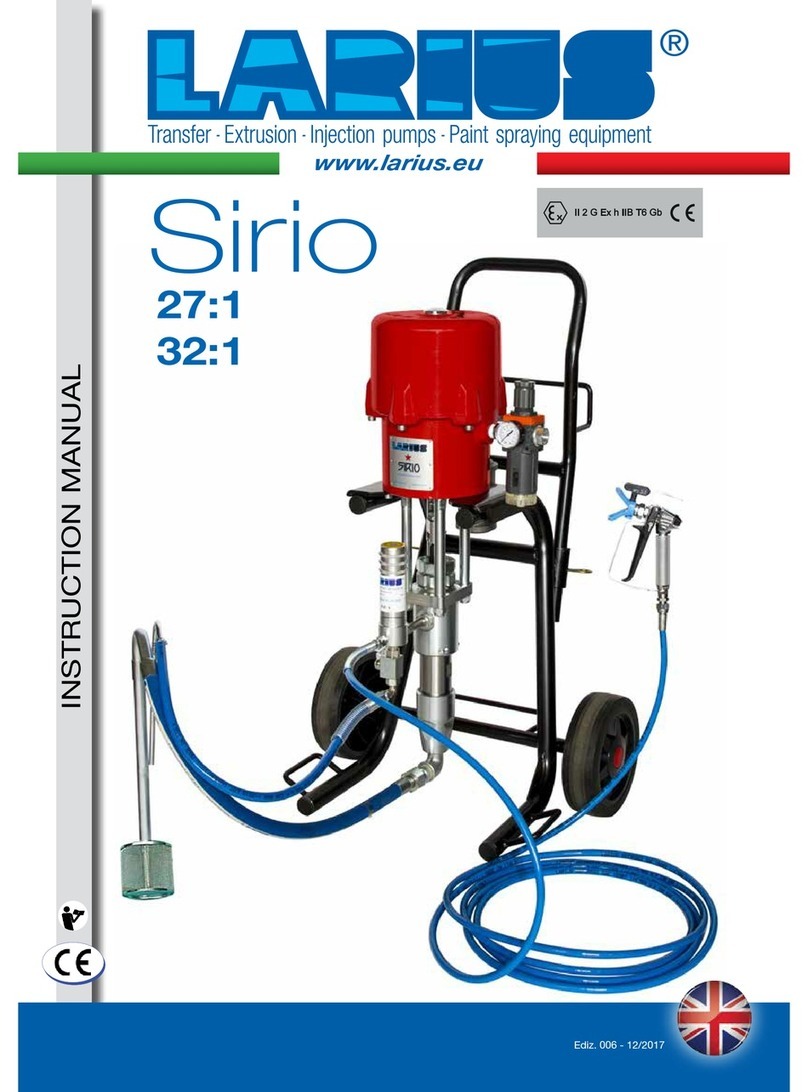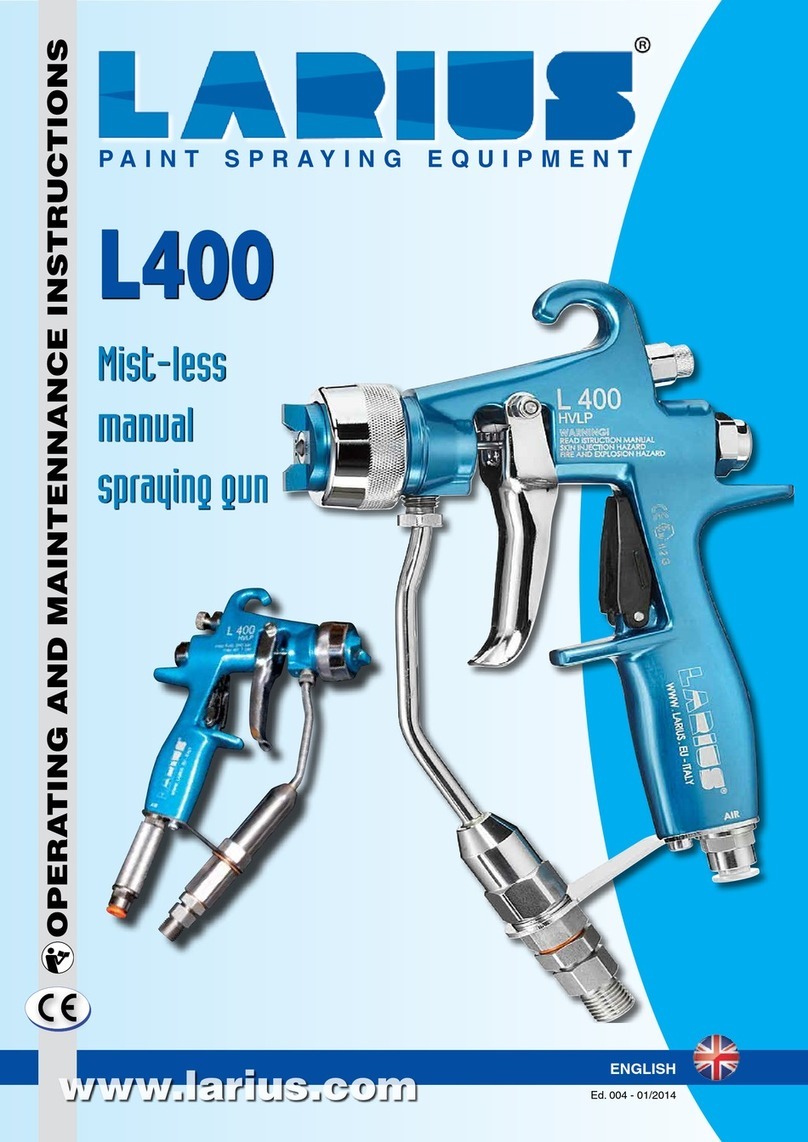
Ed. 009 - 02/2019 www.larius.eu
AUTOMATIC GUNS L100-L101
3
WE ADVISE THE USE OF THIS EQUIPMENT ONLY BY PROFESSIONAL OPERATORS.
ONLY USE THIS MACHINE FOR USAGE SPECIFICALLY MENTIONED IN THIS MANUAL.
Thank you for choosing a LARIUS S.R.L. product.
As well as the product purchased, you will receive a range of support services enabling you to achieve the results
desired, quickly and professionally.
Due to a constant product improvement programme, the factory reserves the right to
modify technical details mentioned in this manual without prior notice.
This manual is to be considered as an English language translation of the original
manual in Italian. The manufacturer shall bear no responsibility for any damages or
inconveniences that may arise due to the incorrect translation of the instructions
contained within the original manual in Italian.
LOW PRESSURE AUTOMATIC SPRAY GUNS
L100 - L101
ADVANTAGE OF USE ......................................................................................................................... p.2
VERSIONS ....................................................................................................................................... p.4
WARNINGS ...................................................................................................................................... p.8
WORKING PRINCIPLE ...................................................................................................................... p.10
TECHNICAL CHARACTERISTICS ........................................................................................................ p.11
ATEX plate ................................................................................................................................... p.12
DIMENSIONS AND OVERALL......................................................................................................... p.13
TRANSPORT AND UNPACKING.......................................................................................................... p.15
SAFETY RULES .............................................................................................................................. p.15
DESCRIPTION OF THE EQUIPMENT.................................................................................................... p.17
FLUID INJECTION HAZARD............................................................................................................... p.18
EQUIPMENT MISUSE HAZARD .......................................................................................................... p.18
FEED HOSE SAFETY........................................................................................................................ p.18
FIRE OR EXPLOSION HAZARD........................................................................................................... p.19
MOVING PARTS HAZARD ................................................................................................................. p.19
CONDITIONS OF GUARANTEE........................................................................................................... p.19
FLUID CIRCUIT INSTALLATION AND CONNECTION ......................................................................... p.20
FLUID SYSTEM CONNECTION ....................................................................................................... p.21
PNEUMATIC SYSTEM CONNECTION .............................................................................................. p.22
EXPLODED VIEW OF THE L100 - L101 MIST-LESS AUTOMATIC SPRAY GUN........................................... p.24
EXPLODED VIEW OF THE BLOCK WITH SIDE INLETS L-100.................................................................. p.26
EXPLODED VIEW OF THE BLOCK WITH REAR INLETS L101 .................................................................. p.27
TROUBLESHOOTING ....................................................................................................................... p.28
GUNS RANGE ............................................................................................................................... p.30
A
B
C
D
E
F
G
H
I
J
K
L
M
N
O
P
Q
R
S
T
U
V
W
